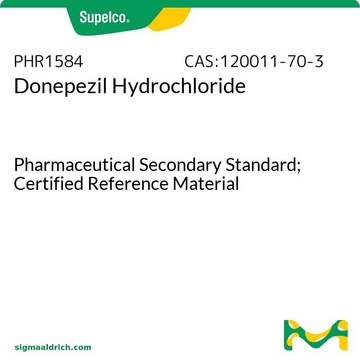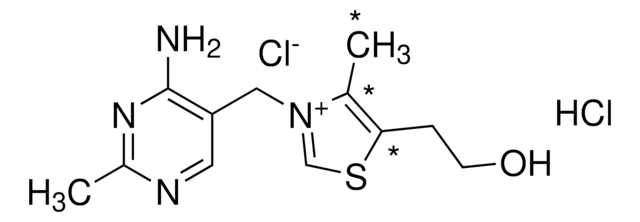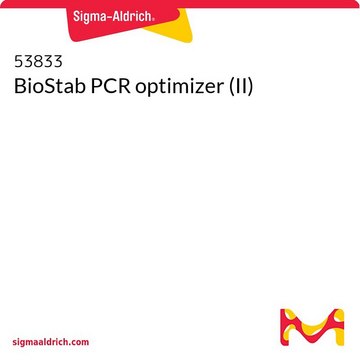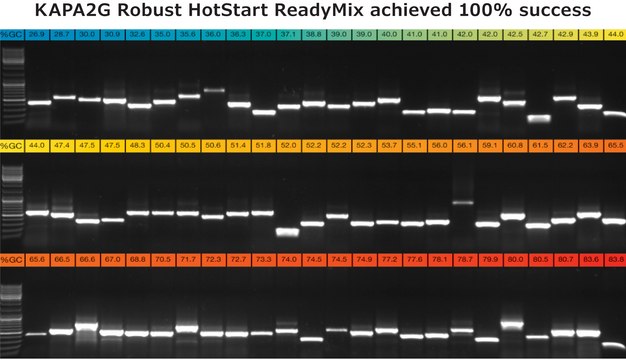53833
BioStab PCR optimizer (II)
Synonym(s):
PCR optimizer (II) BioStab
Sign Into View Organizational & Contract Pricing
About This Item
UNSPSC Code:
12352200
NACRES:
NA.52
Pricing and availability is not currently available.
Recommended Products
form
liquid
Quality Level
impurities
DNases, none detected
RNases, none detected
proteases, none detected
storage temp.
2-8°C
1 of 4
This Item | 11578553001 | 2GRKB | 2GRNTKB |
|---|---|---|---|
| form liquid | form - | form - | form - |
| impurities DNases, none detected | impurities - | impurities - | impurities - |
| storage temp. 2-8°C | storage temp. −20°C | storage temp. −20°C | storage temp. −20°C |
| Quality Level 100 | Quality Level 100 | Quality Level 100 | Quality Level 100 |
General description
BioStab PCR Optimizer is a PCR additive improving the yield and specifity of PCR reactions, enabling the amplification of targets difficult to achieve (fragments containing >70% GC). It allows the use of a wide range of annealing temperatures and eliminates the need for an optimization of amplification conditions.
The 5× solution delivered can be used at a 1-2× concentration in PCR.
The 5× solution delivered can be used at a 1-2× concentration in PCR.
Legal Information
Purchase of this product is accompanied by a limited license for use in the Polymerase Chain Reaction (PCR) process for research purposes only and in conjunction with a thermal cycler whose use in the automated performance of the PCR process is covered by an up-front license fee, either by payment to Applied Biosystems or as purchased, i.e., an authorized thermal cycler.
Storage Class Code
10 - Combustible liquids
WGK
WGK 3
Flash Point(F)
Not applicable
Flash Point(C)
Not applicable
Personal Protective Equipment
dust mask type N95 (US), Eyeshields, Gloves
Choose from one of the most recent versions:
Already Own This Product?
Find documentation for the products that you have recently purchased in the Document Library.
Liivi Maddison et al.
Clinical hemorheology and microcirculation, 57(4), 367-374 (2013-10-02)
Microvascular alterations and intra-abdominal hypertension are both involved in development of organ failure. It is not known whether increased intra-abdominal pressure (IAP) is associated with microcirculatory perfusion derangements. Transient increase in IAP induced by pneumoperitoneum affects sublingual microcirculation. 16 laparoscopic
P W M Janssen et al.
Neurogastroenterology and motility : the official journal of the European Gastrointestinal Motility Society, 26(11), 1651-1662 (2014-09-25)
Spatiotemporal (ST) mapping has mainly been applied to ex vivo preparations of the gut. We report the results of ST mapping of the spontaneous and remifentanil-induced motility of circular and longitudinal muscles of the distal ileum in the postprandial anaesthetized
Morgan Le Guen et al.
Anesthesia and analgesia, 118(5), 946-955 (2014-04-12)
The α2-adrenergic agonist dexmedetomidine is a sedative and can be used as an adjunct to anesthetics. Our primary goal was thus to determine the extent to which dexmedetomidine reduces the requirement for propofol and remifentanil. This double-blinded, randomized study (NCT00921284)
Mario Schietroma et al.
Journal of the American College of Surgeons, 220(5), 921-933 (2015-04-05)
This article has been retracted: please see Elsevier Policy on Article Withdrawal (https://www.elsevier.com/about/our-business/policies/article-withdrawal). This article has been retracted at the request of the Editor-in-Chief. An independent statistical analysis based on the summary data tables and statistical results reported in the
Ignacio Garutti et al.
Anesthesia and analgesia, 119(4), 815-828 (2014-07-19)
Lung resection surgery is associated with an inflammatory reaction. The use of 1-lung ventilation (OLV) seems to increase the likelihood of this reaction. Different prophylactic and therapeutic measures have been investigated to prevent lung injury secondary to OLV. Lidocaine, a
Our team of scientists has experience in all areas of research including Life Science, Material Science, Chemical Synthesis, Chromatography, Analytical and many others.
Contact Technical Service








